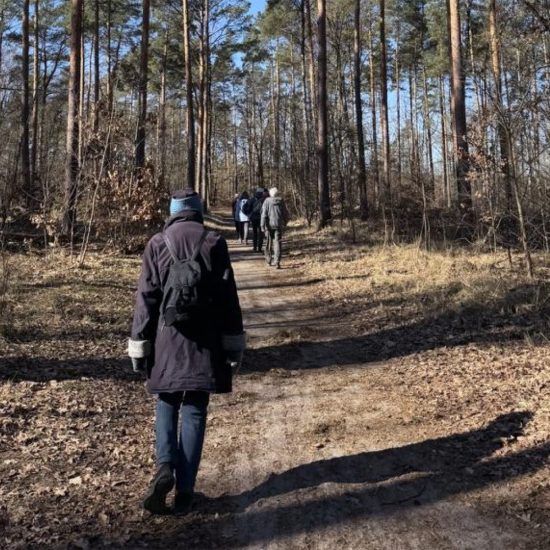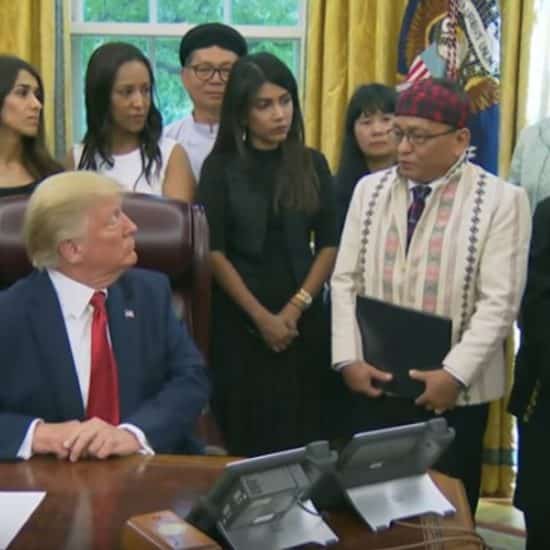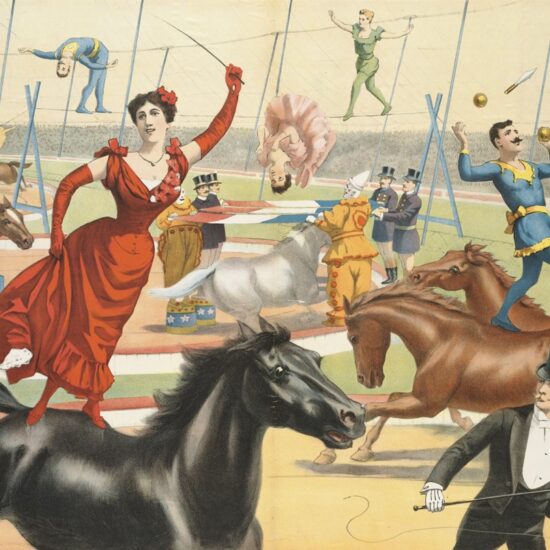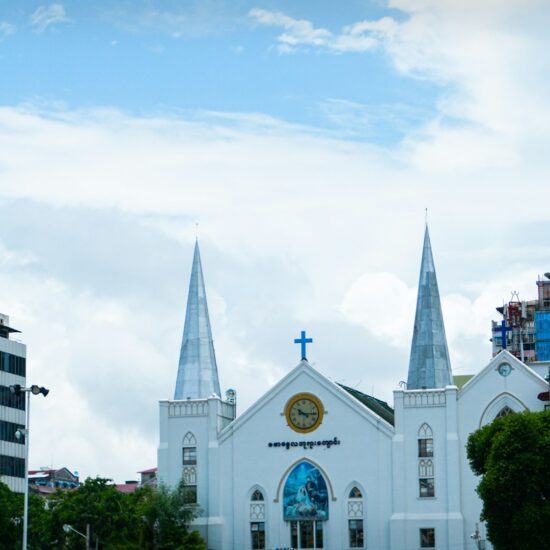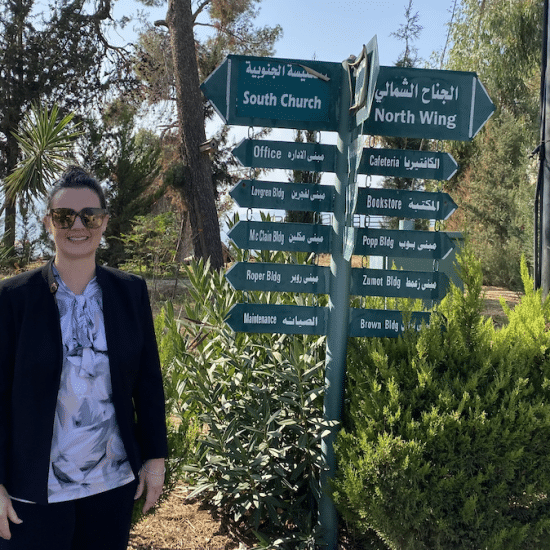What does Christianity look like in a country where over 90 percent of the population is Buddhist? Central Baptist Theological Seminary’s “create” students joined with faculty, staff and a recent graduate on a pilgrimage to Myanmar Feb. 25-March 8.
“Pilgrimage is a holy pursuit, a spiritual practice that endeavors to encounter God in a new way,” Molly Marshall, CBTS president, wrote in an e-mail to fellow travelers before the trip. “A pilgrimage requires respect, humility, attentive listening to God and openness to new vision. We go seeking to learn of the ways of God in Southeast Asia and how Christian witness takes hold in other cultures.”
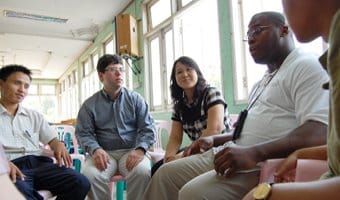
Allyn Dault (second from left) and Reggie Mitchell (second from right), both participants in Central Baptist Theological Seminary's non-traditional master of divinity program, "create," listen to Myanmar Institute of Theology students' views on missions, music and Christianity during the create students' recent pilgrimage to Thailand and Myanmar.
|
The pilgrimage began in Bangkok, Thailand, where the team met with Jack Dunford at the Thailand Burma Border Consortium offices.
Dunford explained that the Burmese army is slowly driving out the various other ethnic groups in the country. Today, more than 140,000 refugees are living in camps along the Thailand border.
“It troubled me to learn of all that is going on in the lives of the indigenous people,” create student Gary Green said.
The pilgrimage continued to Myanmar. The group began with a visit to the country’s first capital city, Bagan. A tour guide told the group that there is a saying about Bagan: “You cannot point your finger in 360 degrees without touching a pagoda.” The city is home to 4,446 Buddhist temples, most of which are over 800 years old.
“The visual landscape is stunning as temple after temple comes into view,” Marshall wrote. “It is an open air museum, as our guide put it, a forest of temples.” These temples, the guide pointed out, were built to gain merit. If a Buddhist has enough money, he or she will build a temple.
“Our time in Bagan granted significant opportunities to observe the reverence with which the faithful encounter these images of the Buddha, the ubiquitous monks and the devoted practices of adherents of the pathway they follow,” Marshall observed. “Surely they demonstrate a longing for God which is part of our common humanity. We were created for communion with God, to seek after the holy.”
In Mandalay, the group visited popular tourist sites, such as the 200-year-old U Bein Bridge, along with places significant to Adoniram Judson, one of the earliest American missionaries. Judson was imprisoned near Mandalay when war with the British government seemed unavoidable. Judson wasn’t British, but his white skin targeted him as the wrong sort of foreigner, Judson expert and fellow traveler Rosalie Hall Hunt told the group.
The trip to the bridge provided an unexpected cause for reflection. Robin Sandbothe, director of seminary relations at Central, recalled the vendors — mostly children — who lined up outside the bus waiting for the Americans to descend the steps.
“One young lady was particularly persistent,” she said. “She latched onto me from the start — walked next to me down the stairs to the water where the bridge began its span across the lake.”
The sales pitch continued for half an hour, as Sandbothe walked across the bridge, pausing to take photos, and ventured back to the bus.
The young lady served as an unofficial guide, reminding Sandbothe that the water beneath them was a lake, not a river, and pointing out her village on the other side. She added that she was taking evening classes at the local Buddhist monastery, which serves as a free school for many of the local villagers.
“I think I knew when the girl attached herself to me as I descended the bus stairs that it was inevitable that I would buy from her,” Sandbothe said. “I didn’t need that necklace. I was a pilgrim, not a tourist, wasn’t I?
“I almost convinced myself not to buy, but as we neared the bus and the persistent pleas to buy — ‘You buy. 5000. Lucky money’ — I knew what I had to do.”
Other members of Sandbothe’s group did the same thing. Each person had one or two children walk with them across the bridge and almost every person stepped back onto the bus with a necklace or two, postcards or handpainted wooden fans.
“The industriousness of Myanmar’s people is inspiring,” create student Allyn Dault said. “We depend on machines and factories to make everything for us, from hinges to books to Big Macs. So much of their income is earned from handcrafted items that contain layers of meaning.
“They also have much to teach us about relating and service. Even conversations on the ‘sales floor’ tend to connect the two people involved in ways we shun in the United States. Next time you’re in Macy’s, try asking the salesperson about his/her family or what they’re using paychecks for; I doubt you’ll start an open dialogue!”
From Mandalay, the group traveled to Yangon, once home base for Adoniram and Ann Judson, and the current site of Myanmar Institute of Theology.
Marshall had been asked to lead an ecumenical lecture series and speak at MIT’s commencement exercises. Students from the two schools had opportunity to meet and ask each other questions about culture and faith.
The discussion focused on how the Myanmar students view the American mission journeys, the difficulty in bringing local styles of music into Christian worship and on the difficulties of being a Christian in a Buddhist context.
“Christians don’t have any rights,” one Myanmar student commented. She pointed out that Christianity is viewed as a Western religion, because Christianity in Myanmar is still practiced in a Western context.
On any given Sunday morning, an American traveler will have no problem participating in Myanmar worship, because the songs and structure of church matches the American model. Choral pieces may even be sung in English.
When sharing their faith with friends, Myanmar Christians have to emphasize that Jesus isn’t a “Western God,” but that He provides hope to those in the East, as well, the students said.
The young Christians feel tension with the older generations, because they want to create a form of worship that is distinctively Myanmar.
CBTS create students compared the struggle over church music in Myanmar with the discussion occurring in the U.S. over styles of music.
“Our dialogue with the students from MIT was most encouraging,” Green said. “I thought that we were going to be on opposite ends of the spectrum. While we did have some differences, our similarities were very evident. It is encouraging to experience how God is truly at work on a global scale.”
The students are currently working to find ways of partnering with Burmese refugees living in Missouri and Kansas.
Jennifer Harris is a CBTS create student.

